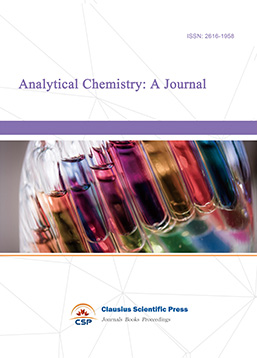Research on the optimum conditions for preparing C4 alkenes by ethanol coupling
DOI: 10.23977/jmpd.2021.050115 | Downloads: 12 | Views: 1813
Author(s)
Yuankai Du 1, Cun Liu 1, Xinyi Xie 1
Affiliation(s)
1 Wuhan Institute of Technology, Wuhan, Hubei, 430205
Corresponding Author
Yuankai DuABSTRACT
In this paper,the experimental problem of preparing C4 olefin by ethanol coupling was solved by curve fitting and control variables,and the influence of classification variables on the experimental results was studied by using two-factor analysis of variance model. Finally, the data conclusions were summarized and analyzed. The relatively complete relationship between each catalyst combination and temperature and C4 olefin yield was obtained, and the influence of each variable on the experiment was analyzed. For some variables, the curve fitting method was used to find the best experimental data points and explore the best combination of catalyst and temperature under the same experimental conditions.
KEYWORDS
Curve fitting, control variables, analysis of variance modelCITE THIS PAPER
Boyao Zhang. Research on the optimum conditions for preparing C4 alkenes by ethanol coupling. Journal of Materials, Processing and Design (2021) 5: 72-75. DOI: http://dx.doi.org/10.23977/jmpd.2021.050115.
REFERENCES
[1] Zhang Dinglin, Zhao Huawen, Zhao Xianying, Liu Yimin, Chen Hua, Li Xianjun. Application of hydroxyapatite as catalyst and catalyst support [J]. Progress in chemistry, 2011, 23(04): 687-694.
[2] Luo Yuhua. Discussion on the application of control variable Method in exploring physical laws [J]. New Curriculum Guidance, 2016(23): 32.
[3] Tong L. Catalytic process of 1, 3-butadiene from ethanol [D]. Tianjin University, 2012.
[4] Lv Shaopei. Synthesis of butanol and C4 olefin by ethanol coupling [D]. Dalian University of Technology, 2018.
| Downloads: | 4089 |
|---|---|
| Visits: | 253414 |
Sponsors, Associates, and Links
-
Forging and Forming

-
Composites and Nano Engineering

-
Metallic foams

-
Smart Structures, Materials and Systems

-
Chemistry and Physics of Polymers

-
Analytical Chemistry: A Journal

-
Modern Physical Chemistry Research

-
Inorganic Chemistry: A Journal

-
Organic Chemistry: A Journal

-
Progress in Materials Chemistry and Physics

-
Transactions on Industrial Catalysis

-
Fuels and Combustion

-
Casting, Welding and Solidification

-
Journal of Membrane Technology

-
Journal of Heat Treatment and Surface Engineering

-
Trends in Biochemical Engineering

-
Ceramic and Glass Technology

-
Transactions on Metals and Alloys

-
High Performance Structures and Materials

-
Rheology Letters

-
Plasticity Frontiers

-
Corrosion and Wear of Materials

-
Fluids, Heat and Mass Transfer

-
International Journal of Geochemistry

-
Diamond and Carbon Materials

-
Advances in Magnetism and Magnetic Materials

-
Advances in Fuel Cell

-
Journal of Biomaterials and Biomechanics


 Download as PDF
Download as PDF